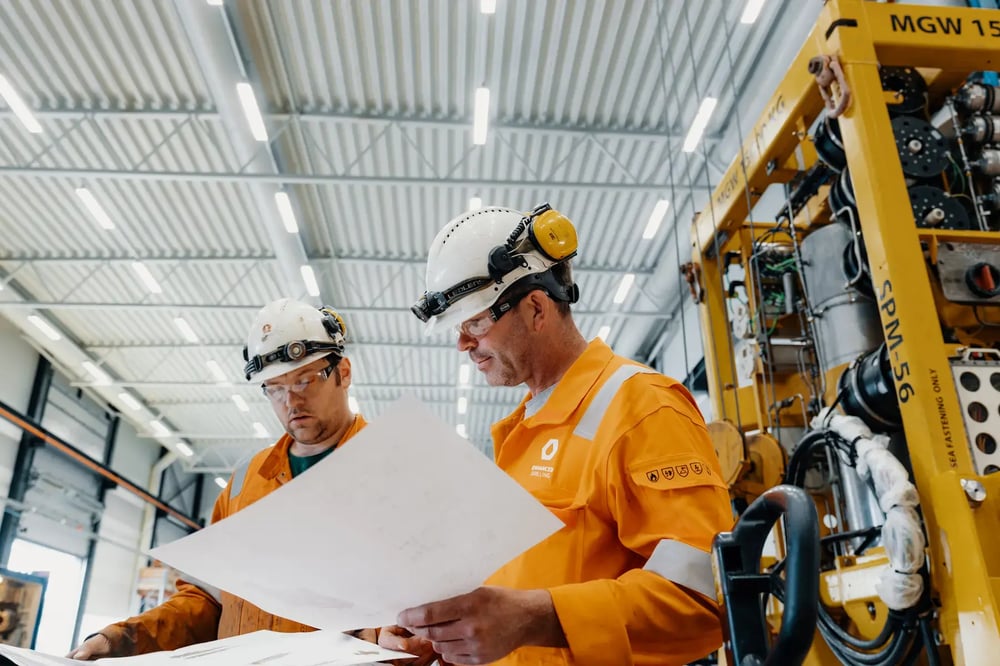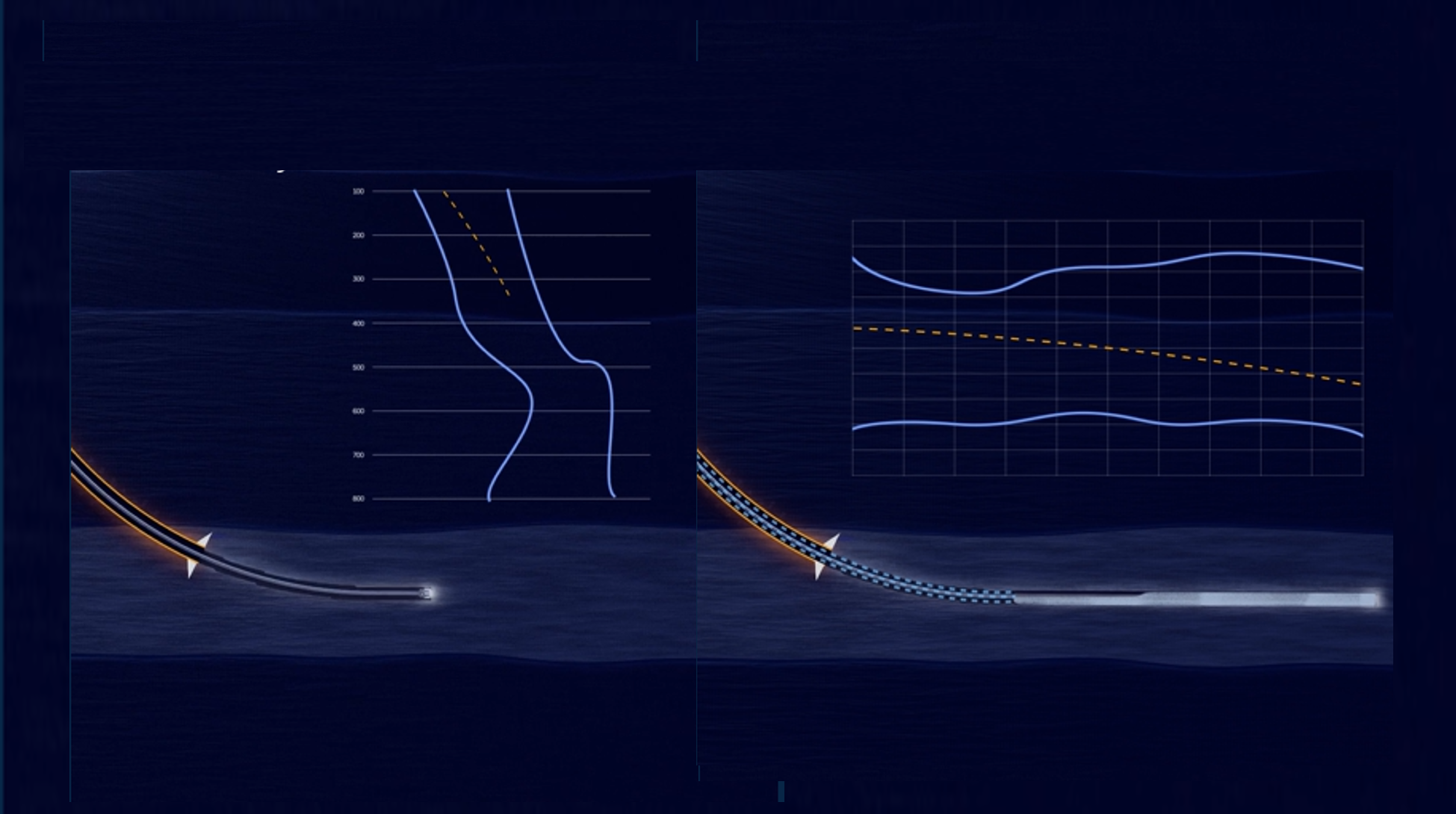12 Critical Questions to Ask Before You Select MPD over Conventional Method
As a drilling tech advisor or drilling engineer, choosing the right technology for your drilling operation is crucial. Hopefully this guide will help you choose the right method for your operations.
Snorre Lutnes is a Technical Sales Manager at Enhanced Drilling, bringing with him 20 years of experience in the drilling industry, with a strong focus on drilling fluids and Managed Pressure Drilling (MPD).
He began his career offshore as a mud engineer before transitioning into project management roles onshore. After spending a decade working internationally, Snorre has returned to Norway, shifting his focus from operational responsibilities to a more specialized role in technical sales.
Sneak peak of what's ahead:
Learn about Managed Pressure Drilling and Conventional drilling, and their respective advantages and disadvantages.
A presentation of 12 critical questions you should consider before selecting the right method for your operation.
Frequently Askes Questions
To help you get even more value from this guide, these FAQs highlight the questions we most often receive from drilling professionals. They provide quick clarifications on key points so you can apply the insights more effectively to your own operations.
Executive Summary
As a drilling tech advisor or drilling engineer, choosing the right technology for your drilling operations is crucial. In this guide, you can read about Managed Pressure Drilling and Conventional drilling, their respective advantages and disadvantages, before being presented with 12 questions you should consider before selecting the right method for your operation.
By the end of this guide, you will have the tools to ensure that the advantages with MPD align with your specific project needs and challenges.

What is MPD vs Conventional Drilling Methods?
Managed Pressure Drilling (MPD)
Pressure Management: MPD involves actively managing the pressure in the wellbore, and the ability to hold a near Constant Bottom Hole Pressure (CBHP). This reduces the risk of gains (influx of formation fluids) and losses (fluid loss into formations).
Monitoring: MPD systems uses mass-flow meters and/or pressure sensors in the well for monitoring which provides Early Kick and
Loss Detection (EKLD).
Flexibility: MPD provides flexibility to adjust the Bottom Hole Pressure (BHP), helping to optimize drilling performance under challenging circumstances, such as narrow pressure windows or loss zones.
Additional reading: 11 Things All Drilling and Completion Engineers Need to Know About MPD
Conventional Drilling
Pressure Management: In conventional drilling, the wellbore pressure is kept overbalanced by the hydrostatic column. The Equivalent Circulating Density (ECD) can be managed by adjusting drilling parameters and fluid properties.
Monitoring: Conventional methods include pit sensor and a paddle in the flowline. Mass-flow meters can be used when circulating.
Flexibility: To change the BHP adjustments to the fluid properties, mainly density and/or drilling parameters are made.
Pros and Cons
Evaluating drilling techniques is essential before selecting the operational approach. In this section we will explore the advantages
and disadvantages of both MPD and traditional drilling methods, focusing on several key elements essential to the drilling process.
Monitoring
MPD systems enables Early Kick and Loss Detection (EKLD) providing earlier and more accurate feedback of losses or gains in
the well. Conventional monitoring methods have a higher degree of uncertainty, and the feedback of gain or loss comes later
compared to the EKLD of the MPD systems.
Sensitivity to conditions
Conventional drilling can struggle in environments with narrow pressure windows, where small changes can lead to significant
operational challenges. MPD systems have the advantage when operating in challenging environments by holding a near constant
pressure, and have the flexibility to adjust the pressure according to actual well conditions.
Operational up time
By maintaining better control of downhole conditions, MPD can decrease the frequency and duration of non-desired incidents which could also lead to well control events.
Due to the challenges of managing the pressure and quickly responding to gains or losses, conventional drilling tends to take
longer to overcome non-desired incidents and have a higher probability of leading to a well control event.
Complexity
MPD brings additional equipment and new methods and procedures. The likelihood of equipment failure or human error
increases when using MPD. Conventional drilling is also more familiar for most drilling crews.
Rig time
Operational time increases when using MPD, unless using CML MPD which can increase tripping speeds and avoid displacements. For the other MPD systems additional time is needed for fingerprinting, retrieval and deployment, tripping and required displacements. Rig time is one of the main reasons why conventional drilling is selected when MPD is not considered a necessity.
Cost
MPD will be an extra cost to the drilling and completion operations. Unless the rig already has an MPD system included, the rig integration cost will be in addition to the operating cost and can be significant.
Read more: Maximizing Savings with CML
Safety
Minimizing pressure fluctuations reduces the likelihood of encountering well control situations. The EKLD which comes with MPD gives earlier and more accurate feedback enabling rapid response to undesired events. Additionally, some MPD system can do Riser Gas Handling with a closure device in the riser.

12 Critical Questions to Ask Before Selecting
While MPD offers advantages over conventional methods, it's essential to address several key questions before choosing an approach. By answering these questions, you ensure that the advantages align with your specific project needs and challenges.
1. Does the added cost of MPD justify the benefit?
MPD adds value to drilling and completion operations but is not always a necessity. Other factors to consider are if the integration cost can be spread over several wells, or if there are other benefits with MPD that can be exploited. If MPD can aid in increasing the production rate the benefit will exceed the cost.
2. If I need to use MPD, can I use it in other areas?
MPD can be used to enhance operations for sections where it is not required. If MPD is installed on the rig and intended for one section, it is worth looking into if it can be beneficial for other operations too, and if the conventional well design can be improved.
3. Will MPD add to rig time, or can I use it to speed up operations?
Rigging up and down MPD equipment adds rig time. Depending on which MPD method is being used it can either add more rig time through flat-time events such as additional displacements or reduce rig time through faster tripping.
4. Is MPD equipment compatible with my rig?
This is rig specific, however MPD can be incorporated on most rigs.
5. What type of rig integration is required?
This is highly rig specific and dependent on the MPD system being integrated. Surface modifications connecting the MPD system to the rig lines are common. Some rigs are “MPD-ready” whereas others can require notable modifications.
6. Which MPD method will best adress my challenges?
This depends on the expected challenges, and any other benefits the different MPD methods can bring to each specific project. It is highly
recommended to consider the cost and benefits the different MPD systems add for each well/campaign to be embarked upon.

7. What additional training is required for using MPD?
Simulator and classroom training is recommended for practicing the new procedures that come with MPD. Practicing communication and interfaces is valuable to ensure everyone is aligned. Specific training on Influx Management and understanding the effect MPD has downhole is also important.
8. What benefits are there to including MPD in your well planning?
There could be significant benefits to consider MPD when designing a well. Sections can be extended, or combined, and the drilling and completion can be conducted with different types of fluids.
9. Are there any local regulatory concerns I need to be aware of?
Yes. Some areas do not allow removing the primary barrier and drill with a fluid density which is statically underbalanced. Other places will not allow active use of the BOP in regular operations requiring the wells to be statically overbalanced before pulling out of hole.
10. Do I need to consider logistical challenges and rig capacity when considering MPD?
Some MPD systems require different fluid densities for drilling, tripping and cementing. If three mud systems are required, it will increase the logistics and could strain the pit capacities of the rig. The type and density of the completion fluid can also be affected depending on the choice of MPD method. On the other hand, MPD can enable using standard cement slurries instead of having to operate with different density slurries and/or foam cement.
11. Do I need to change my well control procedures?
When using an MPD system with Influx Management capabilities new procedures need to be added included clarification on when to use MPD and when to use conventional well control.
12. Will MPD increase the complexity of my operations?
MPD can simplify operations and make it easier to drill and complete a well. When using MPD there are new factors and equipment, to take into consideration during daily operations.
Check out this customer success story where the EC-Drill® optimized production, reduced costs, and enabled successful drilling in challenging reservoirs.
Summary
MPD has several advantages compared to Conventional drilling. However, it is not a given that this is the best choice for your operation.
In this paper, we have addressed critical considerations to evaluate before selecting a drilling approach, including cost versus benefit, rig integration, training requirements, and regulatory compliance.
By thoroughly examining these factors, drilling professionals can make informed decisions that align with project objectives and operational
efficiency, ultimately enhancing safety and performance in drilling operations.
Understanding the differences between the MPD methods and how they will affect your specific campaign is also crucial when considering using MPD.
Curious to learn more? Check out this webinar, where you will see our CML MPD system going head to head with the SBP MPD system.
WANT MORE INFORMATION?
Whether you're curious about MPD solutions, want tailored advice, or simply have questions - I'm here to help.
Fill out the form and I'll get back to you.





